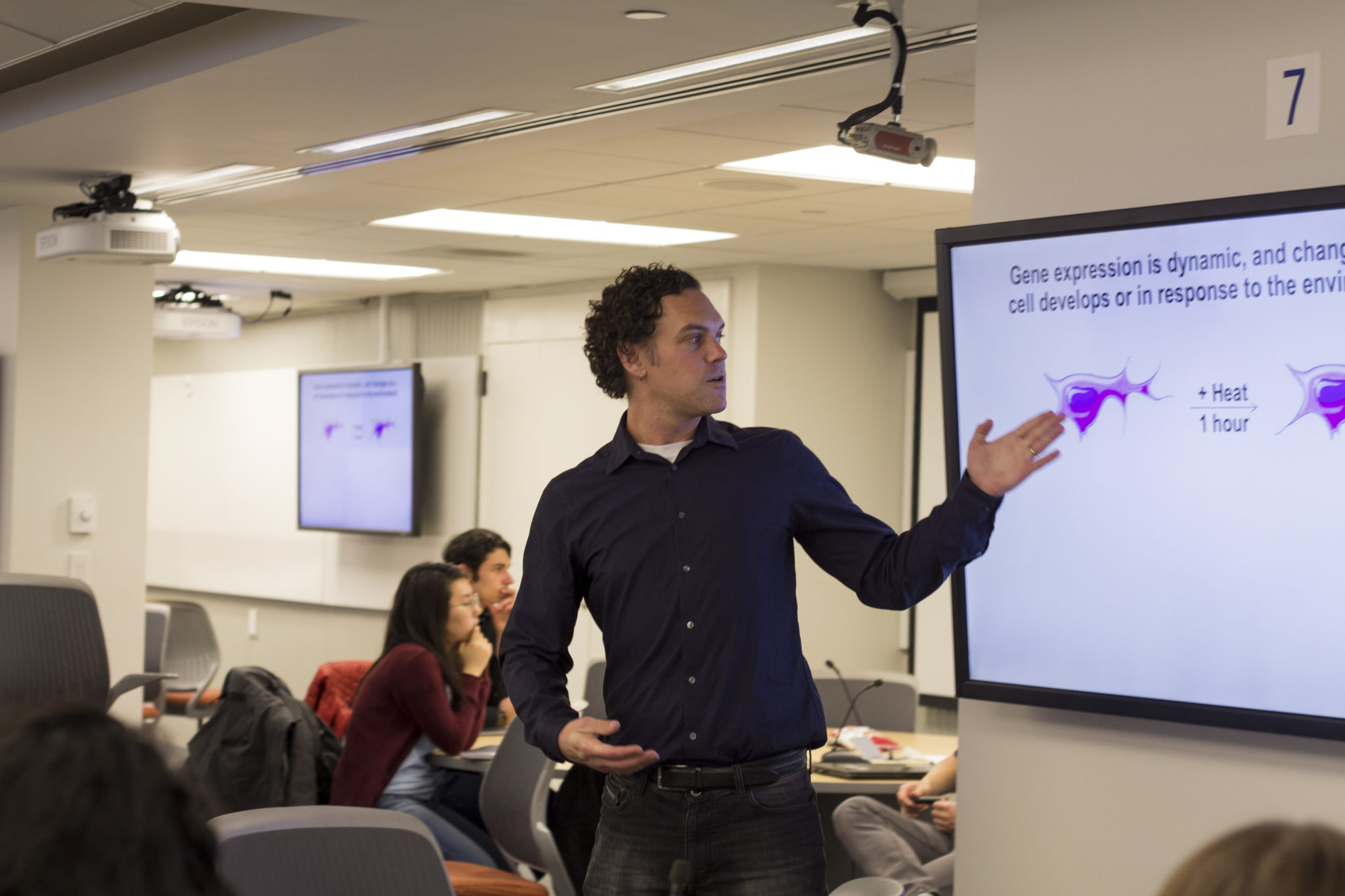
Nasim Mirzajani
Synapse, the outreach team for the Yale Scientific Magazine and a Yale Dwight Hall member group, hosted the annual Resonance conference on Saturday, bringing high school students interested in science to Yale’s campus for a day of classes and talks led by Yale students and professors.
This year’s conference attracted around 70 local high school students, a marked increase from the 50 who attended the inaugural conference in 2013. Attendees, most of whom were part of Yale’s Pathways to Science program, flocked from New Haven, Hamden and West Haven.
“Resonance exposes its participants to various, often overlooked, fields of science, allowing these students to gain a broader perspective on what a career in science can actually entail,” said Tanvi Mehta ’21, Synapse’s director of operations.
The day began with a keynote speech by Sandy Chang, associate dean for science education. He discussed the relation between telomeres, aging and cancer.
“I was hoping to kick off the symposium by getting the students excited about being scientists,” Chang told the News. He said his keynote was “just really to give them advice on how to get interested in science and STEM research.”
He opened his keynote with a simple question: “Why do we age?” Aided by a PowerPoint presentation written in Comic Sans, he listed the reasons: decline in performance of organ systems, decrease in the number and function of cells and diminished maintenance and repair of older cells, which leads to decreased tissue function.
“There was one slide in which he described diseases caused by shortened telomeres,” Synapse president Stephanie Smelyansky ’19 said. “He had really amazing photographs that both showed the tangible symptoms as well as what those symptoms look like on a molecular level. It showed both sides of science on a medical level and a more lab, basic level.”
After he completed his talk, Chang asked attendees questions about his telomeric research. Despite few volunteers, some students were “very eager and answered most of the questions,” he said.
Mehta, who attended Chang’s keynote, said that Chang’s true passion for science and students — in both Yale and the greater community — made him the perfect choice for speaker.
“What stood out the most was having this really prestigious scientist choose to spend his Saturday morning with a bunch of high school kids,” Smelyansky said.
Afterwards, students attended interactive classes and listened to other speakers showcasing a variety of scientific fields. According to Smelyansky, acclaimed researchers spoke about topics from astrophysics to 3-D printing.
Kendrick Umstattd ’19, one of the 10 featured speakers, spoke of her time interning at Google. Having participated in two years of Resonance conferences, Umstattd found the variety of speakers this year to be particularly representative of the power of STEM.
Another speaker, molecular biophysics and biochemistry professor Matthew Simon, spoke about the dynamics of gene expression, and how genes can be studied using a new version of RNA sequencing.
After the speakers, several undergraduates organized demonstrations of scientific experiments for the high school students. Cory Wu ’21 and Jessica Pevner ’21 conducted four investigations, including separating salt and pepper using a balloon’s static electricity and making “elephant toothpaste” with yeast and hydrogen peroxide.
“My personal favorite was the one where we turned ‘water’ into pink lemonade into soda. Water was poured into an empty cup and seemingly turned to pink lemonade instantly,” Wu said. “Pouring the cup into another cup again turned the pink lemonade into what looks like soda.”
In reality, this trick was achieved using acid-base indicators and household ingredients, Wu said.
Smelyansky most enjoyed the demonstration in which they brought in live drosophila flies to show how they are great model organisms for studying genetics.
Synapse’s goal is to motivate high school students to pursue science and to show that there are many pathways to take, she said.
“There is more beyond just becoming a doctor or an engineer,” she added. “You can be a science journalist, you can do academic research, you can go into patent law, you can go into types of engineering you’ve never heard of.”
The conference took place at 17 Hillhouse Avenue and in Dunham Laboratory.
Sammy Westfall | sammy.westfall@yale.edu
Jever Mariwala | jever.mariwala@yale.edu







